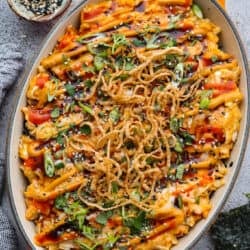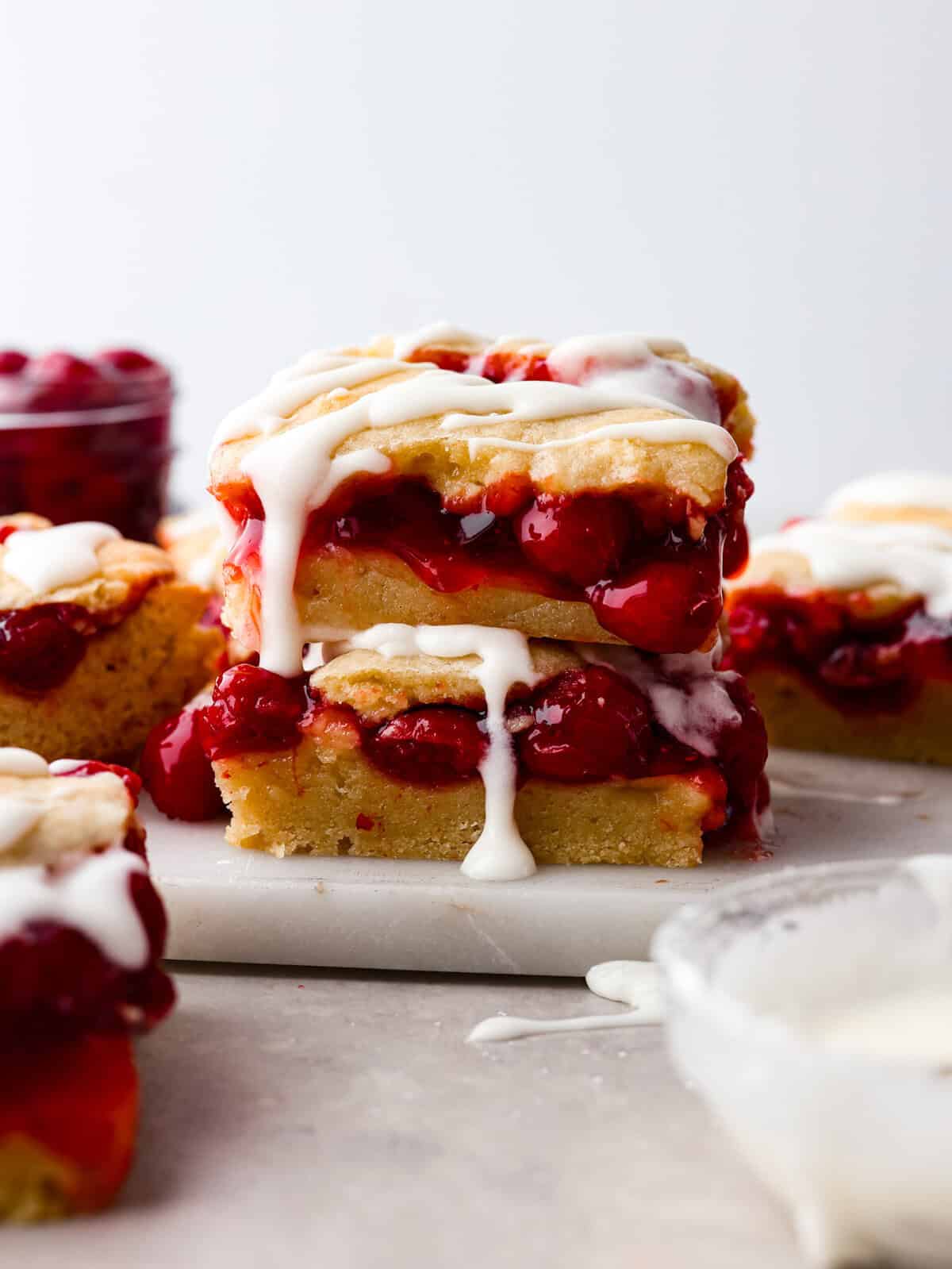For a health-conscious family, it’s important to prioritize healthy food storage. Since we work hard to buy and prepare whole, organic foods as much as possible, we can’t overlook our food storage containers. Gone are the days of using Tupperware to store food.
While plastic seems to be a convenient and inexpensive option, it’s not a safe choice. Even BPA-free plastic has BPS and other chemicals that may be even worse. And although plastic food storage containers typically aren’t single-use plastics, it’s still a problem to use plastic for food storage.
Our family has worked hard to transition to non-toxic and non-scratch cookware and other household items. For food storage, plastic food containers and plastic bags are the normal fare, and it can be a difficult switch. It took me a few years, but I finally phased out all of our plastic food storage containers. Now we use glass, metal, or silicone instead. Although it may seem overwhelming at first, it’s really important for our family’s health.
Why Not Use Plastic Food Storage Containers?
Although plastic seems to be the cheapest and easiest alternative, it’s probably the worst thing you can store food in. Harmful chemicals like BPA (or bisphenol A) and phthalates can leach into our food, drinks, and bodies. BPA is an estrogen-mimicking chemical that can disrupt hormones and lead to weight gain.
You’ll also find phthalates in plastic, although they’ve been banned in Europe. They’re especially harmful to men and boys (including in utero).
Not only does it hurt our bodies, but it also hurts the environment. Did you know that only 9% of plastic is recycled? The rest ends up in landfills. There, it breaks down in the sun, emitting toxic chemicals and greenhouse gases. Or worse, the plastic floats out to sea, endangering wildlife.
Aside from being better for your health and the environment, another bonus to using non-plastic storage containers is that they’re oven-safe. That means you can put them directly in an oven or convection oven to reheat, which minimizes dishes in the long run. Some are even microwave-safe (though I don’t recommend using one). And once you’re done eating, the leftovers can go straight into the fridge or freezer.
Non-Toxic Food Storage Containers
When I first started my transition to non-toxic food storage, there weren’t many options. But the great news is that now there are lots of options for high-quality plastic-free food storage. From glass to stainless steel to silicone, the choices are numerous! And they cover just about any type of food storage need you might have, from storing leftovers to dry foods to on-the-go meals.
Refrigerator and Freezer Food Storage
Storing food in the fridge and freezer is crucial to keeping a real food kitchen. Whether you’re meal prepping, batch cooking, or making freezer meals, you’ll need safe storage for your food. Instead of plastic bags and containers, I now use these alternative food storage containers in the fridge and freezer.
Don’t forget, when storing liquids in the freezer, allow room for them to expand.
Glass
- Glass Mason Jars – These dishwasher-safe glass storage containers are my favorite because they’re inexpensive and versatile. Quart and half-gallon-size jars work great for storing soups, sauces, broth, and even leftover casseroles and sides.
- Pyrex Glass Containers with Lids– Although these have BPA-free plastic lids, they’re pretty inexpensive and some of the first containers I got when I made the switch. These are great to store leftovers.
- Glasslock Oven Safe Food Storage– I also have this set and use it all the time to store almost everything. They’re great because they’re BPA-free.
- Glass Food Storage Containers with Bamboo Lids – This food storage container set has bamboo lids instead of plastic. They’re leakproof too!
- Ello Duraglass – These are great glass food storage containers because the lids lock into place. They’re freezer-safe and the silicone sleeve on the outside keeps the glass from becoming too slippery when it’s frozen.
Silicone
- Xtrema Silicone Food Storage– I love these collapsible fridge storage containers since they don’t take up much room in the cabinets when not in use and are easy to stack in the fridge. These are great meal prep containers, too.
- Zip Top – These food-grade silicone containers are great because they come in fun colors and a wide array of sizes and shapes for storing just about anything. And they’re dishwasher safe!
Stainless Steel
- Latching Stainless Steel Containers – These are great for storing things that my kids need to access often like cut veggies or fruit because they don’t break! These are also great for freezer storage since they’re non-breakable and fit a lot.
- Stainless Steel Food Storage Containers – This set is freezer-safe, leakproof, air-tight, BPA-free, and stackable, so it saves room when you’re not using them.
Food Wraps
Another place we use plastic food storage but might not think about it is plastic wrap, wax paper, storage bags, and aluminum foil. I also ditched these when we made the switch.
- Beeswax Food Wraps – I love these because you can mold them to the shape of whatever bowl or dish you want to use. If you have time, you can even make your own homemade reusable food wrap.
- Natural Parchment Paper – Natural parchment paper is great for wrapping meats, fish, etc., before storing.
- Silicone Lids – I also recently discovered these silicon suction lids that turn bowls you already have into fridge storage.
- Food Huggers – These are great when you need to refrigerate half a lemon, lime, or even an avocado. These create a tight seal so the food doesn’t become dried out or stale.
- Stasher Silicone Bags – These come in all sorts of colors and sizes to store things instead of Ziploc bags!
On-The-Go Storage
When we leave the house for trips we use different options than at home. Glass is hard when you’re out and about because of safety (you can’t bring glass to the pool!). It’s also heavier than other non-plastic food storage containers. These are the containers we use to take food with us when we leave.
- Zip Top – It was hard to replace plastic bags for snacks and sandwiches at first, but now I love these silicone bags.
- Silicone Collapsible Storage Containers – When I need to pack light, I love to use these BPA-free collapsible containers. When we’re done eating, we just break them down and it takes up hardly any room. I’ve even taken them in my suitcase when I’ve traveled to make my own meals once I get there.
- Zipper Sandwich and Snack Bag – Great for dry snacks on the go.!
- Stainless Steel Thermos – This is a great option to take liquids on the go! It’s leakproof and can be used with room-temperature, cold, or hot foods to keep them fresh. I love this one because the lid doesn’t have the interior lip that collects food and gets nasty.!
- U Konserve Condiment Storage – I love these for hummus or homemade sauces that we need to take on the go. They have great tight-fitting lids made of silicone.
- Lunchbots Bento Box – These lunch containers are great for lunch (or dinner!) on the go.
Pantry Storage
Another place where you’ll need non-plastic food storage containers is the pantry. All of the dry foods including grains, nuts, seeds, beans, flour, etc., need a non-toxic storage place.
- Mason Jars with Airtight Lids – I love these glass food storage containers with locking lids for things I buy in bulk.
- Zip Top – Their larger food storage bags are great for storing dry goods because they stand up when full.
- Glass Jar with Lid – These come in larger sizes for things you need to store a lot of.
- Stainless Steel Canister Set – These are great because they aren’t breakable! I store my coffee beans in one of these because they have airtight lids.
- Glass Spice Jars – If you buy your dried herbs and spices in bulk, these glass containers are a great way to store them. I love the bamboo lids and customizable labels.
How do you store food without plastic? What’s your favorite non-plastic food storage option?










































